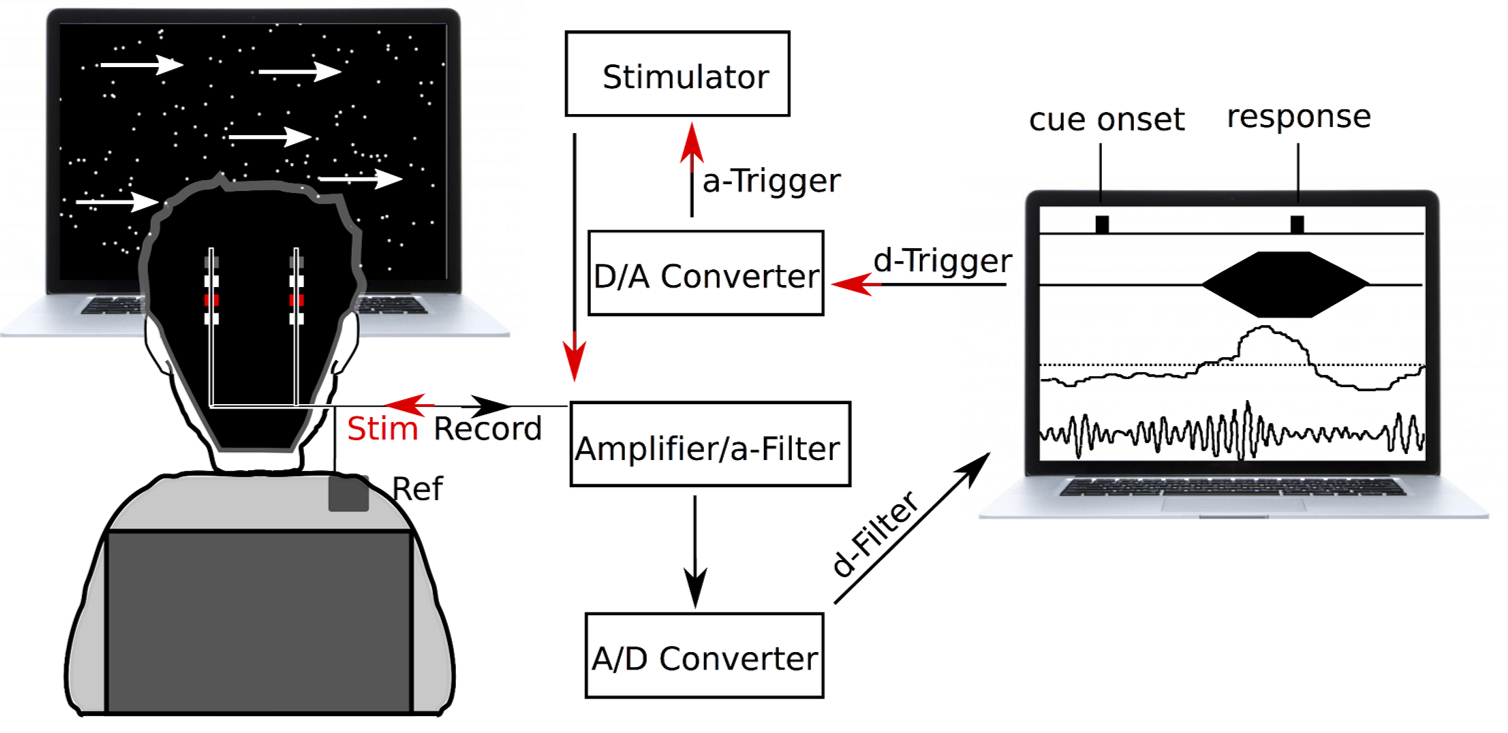Mechanisms Underlying Decision-Making as Revealed by Deep-Brain Stimulation in Patients with Parkinson's Disease.
Here, we studied how electrical activity in a part of the brain called the subthalamic nucleus is involved in making a decision. We show that a precisely-timed burst of electrical waves in the subthalamic nucleus determines whether or not people take time to consider the options when making a decision.
To optimally balance opposing demands of speed and accuracy during decision-making, we must flexibly adapt how much evidence we require before making a choice. Such adjustments in decision thresholds have been linked to the subthalamic nucleus (STN), and therapeutic STN deep-brain stimulation (DBS) has been shown to interfere with this function. Here, we performed continuous as well as closed-loop DBS of the STN while Parkinson's disease patients performed a perceptual decision-making task. Closed-loop STN DBS allowed temporally patterned STN stimulation and simultaneous recordings of STN activity. This revealed that DBS only affected patients' ability to adjust decision thresholds if applied in a specific temporally confined time window during deliberation. Only stimulation in that window diminished the normal slowing of response times that occurred on difficult trials when DBS was turned off. Furthermore, DBS eliminated a relative, time-specific increase in STN beta oscillations and compromised its functional relationship with trial-by-trial adjustments in decision thresholds. Together, these results provide causal evidence that the STN is involved in adjusting decision thresholds in distinct, time-limited processing windows during deliberation.

2015.Hum Brain Mapp, 36(10):4041-4052.
2022. Nat Commun, 13(1):7530.
2022. NPJ Parkinsons Dis, 8(1):88.